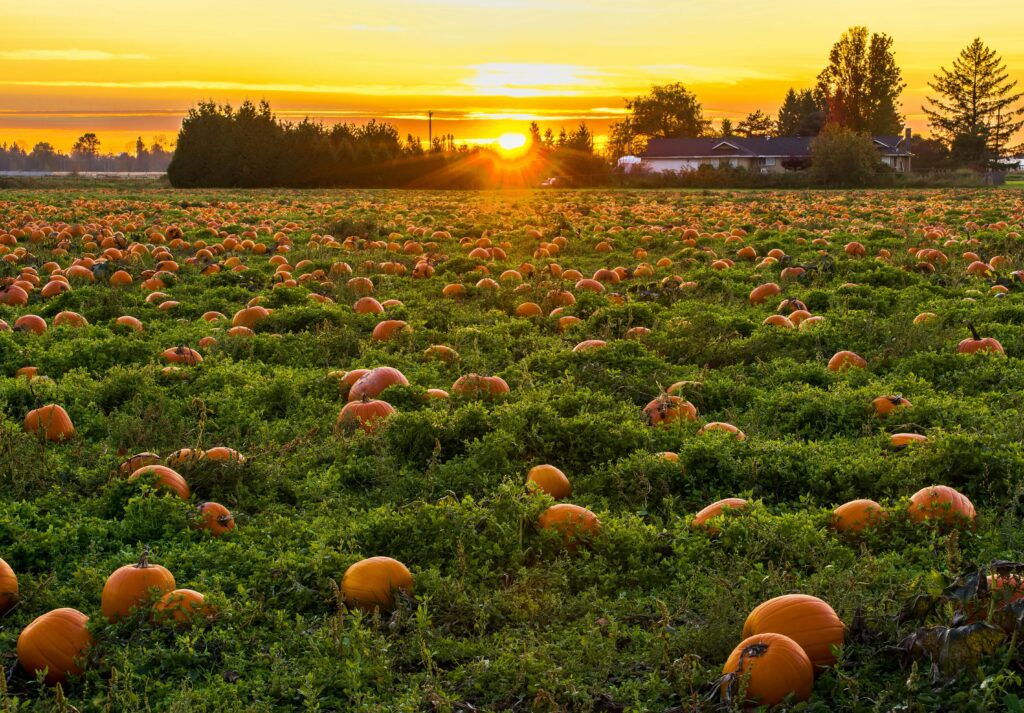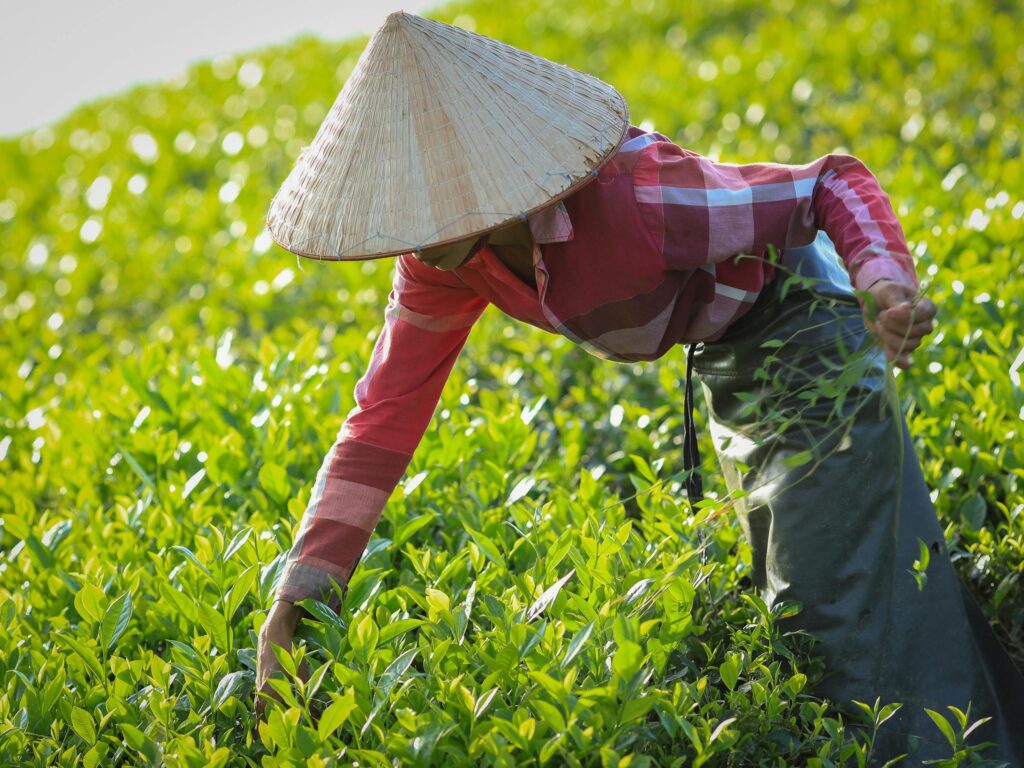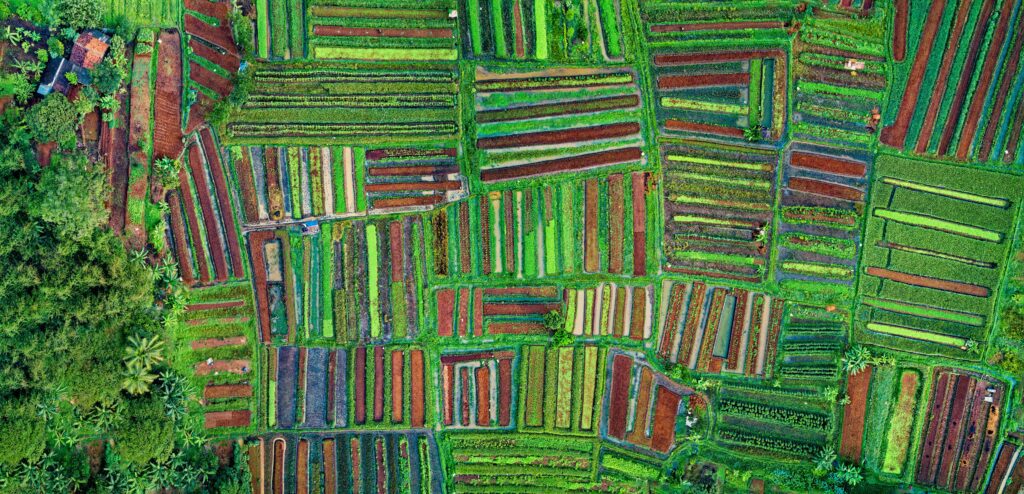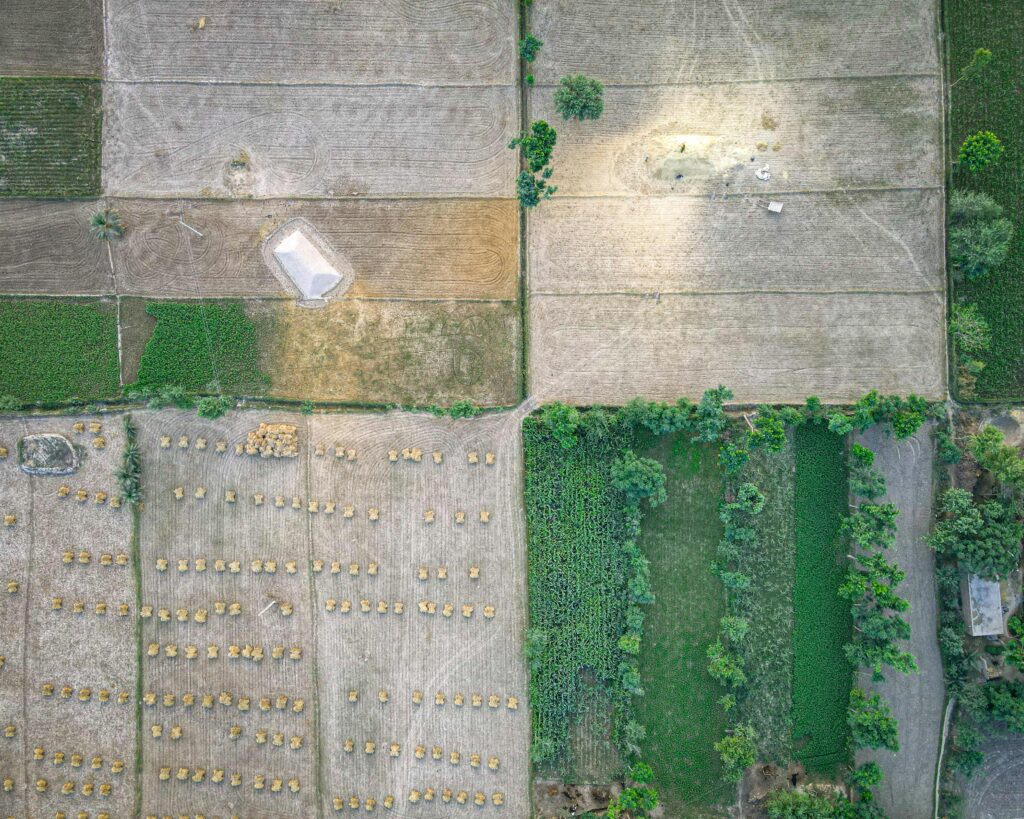Table of Contents
Introduction
Agriculture has been the pillar of human civilization, and farmers have tried various methods of cultivating more food, conserving resources, and preserving the environment over the years. One of the most successful and environmentally friendly methods that have survived the test of time is multiple cropping.
Simply put, multiple cropping involves cultivating more than a single crop on the same land within one year. This practice assists farmers in producing more, utilizing their lands more efficiently, and minimizing the risks invariably associated with relying on a single crop.
Practices closely connected with multiple cropping are such practices as mixed cropping and mixed cultivation, both of which enable farmers to mix crops in a manner conducive to soil sustenance, pest control in a natural manner, and a continuous stream of income.
These methods are not new—farmers in India, Africa, and many other parts of the world have been practicing them for centuries. However, with modern challenges like climate change, rising costs, and soil degradation, these traditional practices are gaining fresh importance in today’s farming systems.
The reason why multiple cropping is on everyone’s lips worldwide is that it strikes a balance between productivity and sustainability. Rather than using excessive chemical fertilizers or expensive machinery, farmers can get maximum output just by scheduling their crop cycles wisely.
For instance, planting wheat after the rice harvest, or pairing maize with legumes, keeps the soil fertile and the family stocked with food throughout the year.
Here, in this blog, we are going to discuss the 7 established advantages of multiple cropping, as well as dig deeper into mixed cropping and mixed cultivation’s role in making farming more resilient and profitable.
You will also get an understanding of techniques, challenges, practical solutions, and real-life examples that can help farmers, students, and agriculture enthusiasts incorporate these practices effectively.
Benefits of Multiple Cropping
Multiple cropping is not simply a method of farming—it is a tactic for making land more productive and sustainable. Farmers employing the system reap numerous economic, ecological, and social benefits.
Following are the 7 established advantages of multiple cropping, discussed in depth with examples and insights.
1. Greater Crop Yield and Productivity
The most apparent advantage of multiple cropping is the remarkable rise in overall food production from a single piece of land. Rather than allowing the land to lie idle after planting one crop, farmers can cultivate the same piece of land for a second crop cycle.
For instance, a farmer could plant rice during the kharif season (monsoon season) and wheat during the rabi season (winter season). This makes the land to yield food all year round, enhancing food security for households and communities.

Likewise, mixed cropping enables growing complementary crops like maize and legumes simultaneously, which not only yields more harvest but also enhances soil fertility. On a per-year basis, looking at it, mixed cultivation yields more production than monocrop systems that plant one crop alone.
This increased production subsequently finds its way to benefit the consumer and farmer alike as a constant supply of food grains, vegetables, and fruits.
2. Optimum Use of Land and Resources
Multiple cropping also has the advantage that it makes maximum use of land, water, sunlight, and nutrients. Rather than staying idle, the land is kept working with an uninterrupted series of growth cycles.
For example, farmers who engage in mixed cultivation usually cultivate deep-rooted plants such as sugarcane in combination with shallow-rooted plants such as pulses. Such a mix helps to ensure that various layers of soil nutrients are utilized efficiently.
In areas where water is scarce, mixed cropping proves particularly helpful since some combinations of crops (such as maize and cowpea) need less watering.
By choosing suitable crops, farmers can utilize available resources optimally without placing too much burden on the soil. Ultimately, this avoids degradation of the soil and sustains agriculture.
3. Better Soil Fertility and Health
Soil fertility is the key to prosperous farming, and multiple cropping helps maintain it. Monocropping continuously tends to exhaust the soil of its nutrients, but if farmers have several crops in rotation, the nutrient level is naturally replenished.
For instance, nitrogen-fixing crops like chickpeas, soybeans, or groundnuts increase the nutrient levels when grown with cereals like wheat or maize. Such a mixture, which is practiced in mixed cropping and mixed cultivation, is minimized in the use of synthetic fertilizers.
In addition, the presence of various plant species in the field promotes microbial activity that tends to improve soil structure and fertility. In the long run, this results in healthier soils capable of sustaining sustainable agriculture for generations to come.
4. Decreased Pest and Disease Risks
Pests and diseases tend to spread at a very high rate in monoculture fields where a single crop is produced. But multiple cropping automatically minimizes such risks since pests struggle to infest varieties of diverse crops.
For example, sowing maize with legumes or sorghum with pigeon pea develops a natural protection against insect attacks. Likewise, mixed cultivation disrupts the cycle of crop-specific diseases through diversity in the same region.
Traditional Indian farmers have cultivated practice mixed cropping by intercropping cereals, pulses, and oilseeds, which reduces crop loss due to pest attacks. This ecological benefit saves farmers costs on pesticides and also benefits the environment by reducing chemical overuse.
5. Economic Security and Stable Income
For marginal and small farmers, one of the biggest problems is coping with market price changes and crop failures. Multiple cropping ensures a safety net in that not all the crops are destroyed simultaneously.
For instance, if rice prices go down, then the farmer can still make money from vegetables, pulses, or oilseeds produced together with rice. In the same way, mixed cropping brings about diversification, which distributes the risk and ensures a consistent income.
Mixed farming is especially helpful in areas where rainfall is unpredictable because if one crop is lost to a drought, another crop in the same plot of land will continue to live and bring income. This economic security is necessary to enhance rural livelihoods and lower farmer distress.
6. Eco-Friendly and Sustainable Farming
The greatest challenge of the world today is discovering farming practices that are sustainable and eco-friendly. Multiple cropping is a natural answer to this problem. By cultivating a number of crops, farmers minimize their use of chemical fertilizers, pesticides, and herbicides.
Cultivation of several crops together promotes biodiversity in agricultural fields, which assists in maintaining ecological balance. For instance, oilseeds, legumes, and cereals cultivated together attract various kinds of insects and birds and form an equilibrated ecosystem.

In the same way, mixed cropping minimizes soil erosion and conserves water. These ecological advantages not only preserve farmland for generations to come but also help battle climate change.
7. Improved Food and Nutritional Security
The last and most significant advantage of multiple cropping is enhanced nutritional security for farm households and communities. Rather than depending on a single staple crop, farmers are able to grow various food crops like cereals, pulses, vegetables, and oilseeds.
Mixed cropping provides households with proteins, vitamins, and minerals in addition to carbohydrates. For instance, rice cultivated together with lentils or maize cultivated together with beans offers a balanced intake that is fundamental for health.
In rural communities, where money is little, mixed cultivation is crucial for enhanced nutrition and alleviation of hunger. By promoting diversity in diet, multiple cropping directly improves human health while enhancing the resilience of communities against food deficiencies.
Methods of Multiple Cropping
Although the idea of multiple cropping is straightforward—cultivating more than a single crop on a piece of land—the methods employed to achieve it may be quite different based on soil type, climate, irrigation facilities, and farmer objectives.
Farmers can achieve maximum productivity and sustainability if they use the proper methods. Following are some of the most efficient methods of multiple cropping that have been in vogue since centuries ago and are still applicable today.
1. Sequential Cropping
Sequential cropping is the cultivation of two or more crops sequentially on the same land in a single year. For instance, a farmer cultivates rice in the monsoon season, then wheat during the winter, and eventually vegetables during the summer.
This method ensures that land is productive throughout the year. In contrast to monocropping, where land lies fallow for months, sequential cropping utilizes resources such as water, nutrients, and sunlight to their fullest capacity.
Coupled with mixed cultivation techniques such as the use of legumes in rotation, soil fertility is restored automatically. This method is widely practiced in India, where small farmers depend on mixed cropping of pulses and oilseeds following cereal crops in order to keep income and soil in balance.
2. Intercropping
Intercropping is the planting of two or more crops simultaneously in the same area. The crops are selected in a way that they do not compete strongly for water, sunlight, or nutrients. Rather, they complement each other. An example is maize and beans.
Beans get support from maize in the vertical direction, while beans add nitrogen to the soil, which benefits maize growth. This mixed cropping system helps in utilizing land efficiently and minimizes the chances of crop loss. Intercropping also wards off pests, as insects get bewildered by the variety of crops.
In areas where land is scarce, intercropping in practices of mixed cultivation allows farmers to earn greater income without the additional land.
3. Relay Cropping
Relay cropping is a form of multiple cropping in which a second crop is sown before the harvesting of the first crop is complete. For instance, planting lentils in a paddy field just as the rice crop is ready to be harvested.
This kind of system utilizes residual soil moisture efficiently and provides no crop interval. Relay cropping is particularly valuable in rain-fed regions, where farmers are able to reap maximum gains from seasonal rains.
It also contributes to mixed cultivation, as intercropping of crops such as cereals and pulses enhances soil nutrition. By implementing relay cropping, farmers are able to obtain a second harvest without additional irrigation or fertilizer costs, making it a very resource-conserving technique.
4. Mixed Cropping
Mixed cropping is among the earliest and most prevalent methods of multiple cropping. Under this practice, two or more crops are cultivated in the same land without separate rows.
Farmers tend to combine cereals with pulses or oilseeds, for example, wheat with mustard or maize with pigeon pea. The objective is to reduce the likelihood of entire crop failure. If one crop fails because of pests or unfavorable weather, the other crop makes up for the loss.

This method is also an important component of mixed cultivation because it enhances biodiversity within the field. Mixed cropping is practiced extensively in smallholder fields throughout India, Africa, and Latin America because it is low-cost and ensures food and income security.
5. Multi-Tier Cropping
Multi-tier cropping is a further developed variety of multiple cropping, in which crops varying in height and root depth are cultivated together in the same parcel of land. Coconut trees (tall), for instance, could be planted alongside banana plants (medium height) and soil-level crops such as ginger or turmeric.
This tiered system, which comes under mixed cultivation, allows for effective use of sunlight, space, and soil nutrients. It also aids in weed management, water retention, and income diversification. Multi-tier cropping farmers have harvests throughout the year since various crops mature at various times.
While it demands careful planning as well as crop choices, this method is especially useful in tropical and subtropical climates where an array of crops can coexist.
6. Crop Rotation with Multiple Cropping
While crop rotation is usually considered a standalone concept, it is even more effective when used in conjunction with several cropping systems. Alternating cereals, legumes, oilseeds, and vegetables between seasons prevents any one crop from overstressing the soil.
For instance, after wheat, planting legumes such as chickpeas replenishes nitrogen in the soil and saves on fertilizer. When combined with mixed cultivation and mixed cropping, crop rotation not only enhances the health of the soil but also disrupts the life cycles of pests and disease.
In the long term, the technique allows for maintenance of sustainability and lessens dependence by the farmer on expensive chemical inputs.
Challenges of Multiple Cropping
Though multiple cropping has several advantages like greater productivity, soil fertility, and income security, it also comes with some challenges. Practically, technically, and economically, farmers can find difficulties in practicing systems like mixed cropping and mixed cultivation.
Knowing these challenges helps in taking effective measures to make such practices extensively acceptable in contemporary agriculture.
1. High Input Requirements
The most difficult challenge of multiple cropping is the greater requirement of inputs such as seeds, fertilizers, water for irrigation, and human labor. Because farmers plant two or more crops in a single piece of land, input requirements are increased significantly.
Intercropping maize with beans, for instance, needs close spacing of seeds and twice the effort at planting and harvesting. Farmers with limited inputs struggle to acquire the extra inputs.
Though multiple cropping through mixed cultivation lessens the requirement of fertilizers through nitrogen-fixing crops, overall input management becomes complicated and time-consuming.
2. Inter-crop Competition
In multiple cropping in the form of mixed cropping and in other multiple cropping practices, crops may compete with one another for sunlight, nutrients, and water. Unless crops are properly chosen, this competition may decrease overall yields rather than enhancing them.
For instance, planting two cereal crops together, like wheat and maize, may deplete the soil rapidly and lead to poor performance of both. Similarly, if tall crops overshadow smaller ones in a mixed cultivation system, the latter may fail to thrive.
This requires proper knowledge and planning, which many small-scale farmers may lack.
3. Pest and Disease Management Complexities
Although multiple cropping diminishes the likelihood of major pest infestations, it may also complicate pest and disease control. Various crops have various pests, and when they are intercropped, farmers tend to be at a loss to administer targeted control measures.
For instance, aerial spraying of pesticides in a mixed crop plot with cereals and vegetables is made impossible because the dose and pesticide type effective for one crop would be lethal to the other.
In like manner, in multiple cropping, some combinations of plants may inadvertently provide conducive environments for pests. Farmers may lose both crops as a result of lack of proper training.
4. Labor and Time Intensiveness
Multiple cropping is more labor-intensive compared to monocropping. Sowing, weeding, irrigation, and harvesting are more time-consuming when crops are in numbers.

For instance, in mixed cropping, where pulses and cereals are cultivated together, the harvesting must be done cautiously to ensure not to damage one crop while harvesting the other. This added burden usually deters farmers, particularly in regions where agricultural labor is expensive or not readily available.
In mixed cultivation, where the crops have varying periods of maturity, the farmers need to remain involved with the field round the clock, which adds time demands.
5. Market and Price Challenges
Although farmers may successfully implement multiple cropping, they can still be challenged by marketing the variety of produce. Various crops will have different maturation periods, and it becomes challenging to find markets for smaller quantities.
For instance, one farmer who engages in mixed cropping of maize and pigeon pea might realize that maize sells fast, yet pigeon pea is sold at a low price since demand is not available in nearby markets.
Equally, in multiple cropping in mixed cultivation, perishable produce such as vegetables can rot en route to consumers. In the absence of robust market linkages and storage facilities, farmers may not receive equitable returns for their labor, constraining the economic advantages of multiple cropping.
6. Knowledge and Skill Gap
Effective use of multiple cropping needs knowledge of crop compatibility, soil health, irrigation, and pest control. Most smallholder farmers, especially in developing areas, have no scientific background but use traditional methods.
Consequently, they might select combinations of crops that are inappropriate for their climate or soil type. In mixed cropping, poor sowing practices or spacing can result in low yields. Mixed cultivation also needs long-term planning and rotation programs, which most farmers do not have the training for.
The lack of this understanding is among the largest hindrances in adopting multiple cropping on a large scale.
Solutions for Effective Multiple Cropping
Although multiple cropping is accompanied by drawbacks like high input requirements, labor inputs, and marketing challenges, most of these pitfalls can be bridged with effective techniques.
Through proper integration of indigenous wisdom and conventional farming practices, farmers can increase the profitability, sustainability, and usability of mixed cropping and mixed cultivation. Some practical solutions that overcome the main problems of multiple cropping are given below.
1. Intelligent Crop Selection and Planning
The success of multiple cropping mostly hinges on selecting the appropriate crop combinations. Crops must be combined that supplement each other in nutrient utilization, water requirements, and cropping periods.
For instance, cereals such as maize can be mixed with legumes like beans or groundnut to enhance soil fertility. In the case of mixed cropping, mustard also does well with wheat since their growing demands vary.
In intercropping, plants with different root depths and heights, like coconut, banana, and ginger, promote effective utilization of sunlight and soil nutrients. Training farmers to adopt the best crop combinations for their areas by agricultural extension services can prove to be very effective.
2. Utilization of Improved Seeds and Technology
Improved seeds that are resistant to pests and drought can make multiple cropping far more effective. For example, short-season crop varieties enable farmers to pack two or three cropping seasons within a year.
Mechanization is also involved—utilizing equipment such as seed drills, intercropping planters, and small-scale harvesters minimizes labor intensity in multi-cropping fields. Furthermore, advanced irrigation systems such as drip and sprinkler systems provide efficient supply of water in multi-cultivation systems, where individual crops might require different amounts of water.
The use of technology to integrate with conventional practices enables farmers to save time and money, as well as increase overall production.
3. Integrated Nutrient and Pest Management
Balanced soil fertility and integrated pest management are important for multiple cropping. Farmers must implement integrated nutrient management (INM) using organic manures, biofertilizers, and chemical fertilizers in the optimal ratio.
In intercropping, where cereals and pulses are cultivated together, natural fixation of nitrogen by legumes minimizes the use of artificial fertilizers. Likewise, IPM practices, including neem-based sprays, pheromone traps, or biological weeders, manage pests without killing mixed crops in intercropping.
Training of farmers in INM and IPM ensures healthy crops, improved yields, and environmentally friendly cultivation methods.
4. Effective Labor and Time Management
Since multiple cropping tends to demand increased labor, rural farmers can gain through community-based options like cooperative farming and pooled machinery services. For mixed cropping, where there is a variation in harvesting time, farmers can share labor resources to cut costs.

For mixed cultivation, contract farming arrangements or farmer producer organizations (FPOs) can assist in coordinating activities and workloads more efficiently. Also, scheduling planting and harvest through the use of online farm management systems makes optimal use of time and avoids labor shortages.
5. Improving Market Access and Storage
Marketing is one of the greatest constraints in multiple cropping, particularly for perishable produce. The establishment of improved storage facilities, cold chains, and farmer cooperatives can facilitate overcoming these obstacles.
Surplus produce may be marketed through local farmer markets or directly to consumers at fair prices in mixed cropping. For mixed cultivation, value-addition methods like oilseed processing into edible oil or pulses into flour can raise the income.
Government programs, online marketplaces, and e-mandis also offer venues for farmers to sell their different crops at improved rates. Strengthening market linkages will motivate farmers to adopt multiple cropping confidently.
6. Training and Knowledge Sharing
The knowledge gap among farmers can be filled through training schemes, agricultural universities, and rural workshop centers. Demonstration farms can be used to highlight successful models of multiple cropping, mixed cropping, and mixed cultivation, and thereby allow farmers to learn from examples.
Mobile advisory services and mobile apps are also gaining popularity, providing real-time advice on crop choice, pest management, and irrigation. Farmers are made aware and educated by this, gaining confidence and capability to effectively implement these techniques.
In the long run, it reinforces food security and rural livelihoods.
FAQs on Multiple Cropping
1. What is multiple cropping, and how is it different from mixed cropping?
Multiple cropping is defined as the cultivation of two or more crops on a single piece of land within a year. It can be sequential cropping (succession of one crop by another) or intercropping (two crops being cultivated together).
Mixed cropping is another form of multiple cropping in which two or more crops are cultivated simultaneously on the same land without following any definite pattern. For instance, wheat and mustard are frequently cultivated together under a mixed system of cropping.
Briefly, multiple cropping is a general concept, whereas mixed cropping is a particular type.
2. Why does mixed cultivation enhance farm sustainability?
Mixed farming enhances sustainability through intercropping of plants that complement one another. Deep-rooted and shallow-rooted crops planted together, for instance, make better use of soil nutrients.
Likewise, legumes enrich the soil with nitrogen, and this favors cereal crops when planted alongside each other. Mixed cultivation is also a way to lower pest risks, save soil moisture, and promote farm biodiversity.
Through mixed cultivation, farmers maintain long-term soil fertility and ecosystem balance, thus making agriculture more environmentally friendly and sustainable.
3. What are the principal benefits of multiple cropping for small farmers?
Multiple cropping is beneficial to small farmers in several ways. It yields a higher total output from small areas of land, provides a constant stream of income, and minimizes crop loss. By mixed cropping, small farmers are able to cultivate a variety of crops, thus shielding them from price uncertainty in the market.
Again, mixed cultivation replenishes soil fertility and saves money on costly fertilizers. On the whole, multiple cropping enables small farmers to realize food security, income stability, and sustainable yield even on tiny pieces of land.
4. What are some of the challenges farmers encounter when embracing mixed cropping and mixed cultivation?
Though the mixed cropping and mixed cultivation have numerous advantages, there exist impediments to farmers such as greater labor needs, intricate pest control, and selling difficulty in diversified crops.
Various crops in multiple cropping systems tend to have variable water, fertilizer, and harvesting requirements, thus rendering management more complicated. Further, insufficient training and market access at times deter farmers from practicing these systems.
Nevertheless, with the use of advanced technology, cooperative farming, and governmental assistance, these impediments can be efficiently eliminated.
5. Is multiple cropping a means of enhancing food and nutritional security?
Yes, multiple cropping significantly contributes to food and nutritional security. Rather than relying on one staple food, farmers can plant cereals, pulses, vegetables, and oilseeds in combination. Rice with lentils or maize with beans, for instance, gives one both carbohydrates and proteins, making one’s diet balanced.
With mixed cropping and mixed cultivation, families are assured of a variety of food products that enhance their nutritional intake and minimize hunger. The system also guarantees availability of food throughout the year, and this enhances family health and community resilience.
Conclusion
Agriculture is changing, and traditional knowledge is proving relevant yet again in contemporary times. Among the best methods of sustainable agriculture is multiple cropping, a practice which not only increases yields but also guarantees long-term soil fertility, improved resource utilization, and economic stability to farmers.
With the use of varied strategies such as sequential cropping, intercropping, relay cropping, and mixed cropping, farmers can achieve optimal utilization of their land with the least risks.
In the same way, mixed farming increases biodiversity, soil health, and makes agricultural production more adaptable to climate change and pest invasions.
In spite of such obstacles as increased labour requirements, input demands, and market constraints, there are practical solutions. With intelligent selection of crops, better seeds, integrated pest management, community labour sharing, and enhanced market connections, farmers can cross these barriers.
Government incentives, training sessions, and information technologies are also bridging the knowledge gap, making all these practices more accessible to marginal and small farmers.
Ultimately, multiple cropping is not simply a method—it is a way to sustainable and rewarding agriculture. By marrying old practices such as mixed cropping with new technology, farmers can achieve greater incomes, preserve the environment, and guarantee food and nutrition security for generations to come.
The moment to act is now. Every farmer, policymaker, and agricultural student has a responsibility to spread mixed cultivation and multiple cropping as the farming of the future.
